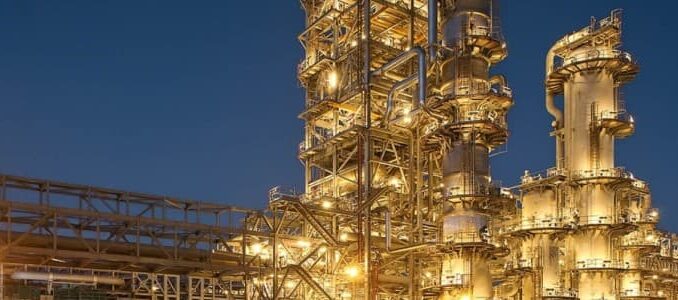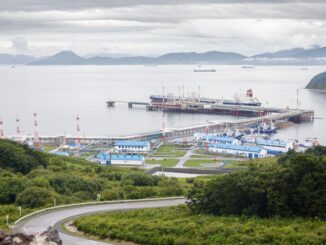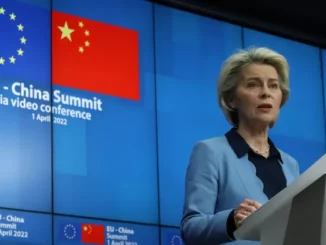
- The EU finally agreed on Monday to set a price cap on natural gas.
- The price cap could limit Europe’s capacity to continue to draw most of the global spot LNG supply.
- If risks to the security of supply occur, the European Commission will suspend the price cap rule.
After months of negotiations, the EU finally agreed on Monday to set a price cap on natural gas to protect consumers from excessive price spikes and limit inflationary pressure and industrial damage to European economies. The price cap, however, could limit Europe’s capacity to continue to draw most of the global spot LNG supply, analysts say.
Some EU member states such as Germany and the Netherlands had reservations about a price cap, concerned that a market intervention and a ceiling on prices would take away Europe’s key advantage in attracting LNG supply this year—higher prices than in Asia.
Germany agreed to back the price cap only after the EU also agreed to accelerate permitting rules for renewable energy projects, according to EU officials.
Temporary Price Cap As Of February 15
EU energy ministers have reached a political agreement on a regulation that sets a so-called “market correction mechanism”, which would come into force on February 15, 2023.
The market correction mechanism will be triggered if the month-ahead price on the Title Transfer Facility (TTF), Europe’s key benchmark, exceeds $191 (180 euros) per MWh for three working days, and the month-ahead TTF price is $37 (35 euros) higher than a reference price for LNG on global markets for the same three working days.
On Monday, the TTF contract for January traded at around $116 (110 euros) per MWh.
However, if risks to the security of supply occur, the European Commission will suspend the price cap rule, the EU agreed.
“Today’s agreement clearly signals that Europe is not prepared to pay any price for gas and that it is able to act united to ensure its energy security,” EU Commissioner for Energy Kadri Simson said.
Record LNG Imports Into EU
The biggest concern of some EU member states has been that a price cap and similar market interventions would make the gas market less transparent and could deprive Europe of LNG supply that has been easily flowing to the EU so far this year.
The EU’s incentive to shake off Russian gas dependence and replace volumes that Russia no longer supplies have made Europe the preferred destination of flexible-contract LNG cargoes, especially those from the United States. More than 70% of all U.S. LNG exports have headed to Europe in recent months and America is sending record volumes to the EU.
Between January and November, LNG imports into the EU and the UK combined jumped by 65% year over year, according to estimates from the Oxford Institute for Energy Studies (OIES). Imports from the United States alone surged by 176%, while imports from other sources grew by 27%. In that same period, global LNG exports grew by just 5.5%, with nearly half of the growth coming from the United States, OIES said.
“The key point here is that European LNG imports grew faster than global LNG supply, and in particular, European LNG imports from the United States grew faster than total U.S. LNG exports,” OIES researchers noted in their Quarterly Gas Review this month.
Europe’s ability to attract most of the LNG supply so far this year was helped by high European prices, falling LNG demand in Asia, including in China, and lower imports of LNG in Brazil, where hydropower capacity performed better than expected, according to OIES.
China has seen an unprecedented slump in its LNG imports this year, and Chinese buyers largely stayed away from spot purchases as inventories ahead of the winter were adequate, and demand was lackluster amid snap Covid lockdowns that have slowed industrial demand and economic growth.
Low Chinese demand and prohibitively high prices for other Asian buyers such as Pakistan or Bangladesh have created tailwinds for Europe’s LNG purchases.
LNG Market Set To Tighten Next Year
In recent weeks, however, demand in Asia has started to grow, China returned to the LNG spot market for next year, and the easing of the Covid restrictions in China are likely to intensify competition on the LNG market between the Atlantic and the Pacific basins.
Europe is building floating LNG import terminals to welcome more cargoes next year, but there simply may not be enough LNG supply to flow to Europe when Asian demand rebounds, analysts say.
“Even with an anticipated 35 Bcm rise in LNG supply in 2023, Europe is likely to face increasing competition for LNG supply from Asian markets, especially China, and any LNG supply issues will only exacerbate the situation,” OIES research fellows wrote.
Last week, Asia’s spot LNG prices for February delivery rose by 1% to $38 per million British thermal units (MMBtu), industry sources told Reuters. Chinese giant CNOOC has reportedly bought four to six LNG cargoes for delivery next year, in one of the largest spot purchases this year.
Amid signs of rising demand from Asia, the EU gas price cap could bring more risks than benefits. The EU said on Monday the cap would be suspended if risks outweigh benefits.
“The exclusion of day-ahead and intra-day contracts from the mechanism would make it possible for European companies to buy the gas they need in the short term, but would still leave consumers exposed to price hikes,” said Jacob Mandel, Senior Associate for Global Energy Markets at Aurora Energy Research.
“And it could keep importers from acquiring gas that needs to be bought in advance, such as the LNG cargoes that have kept Europe well supplied so far this winter.”



